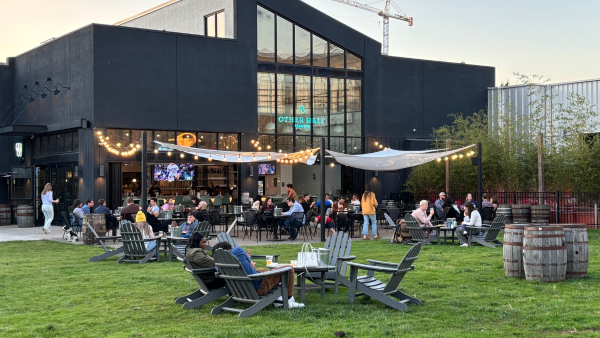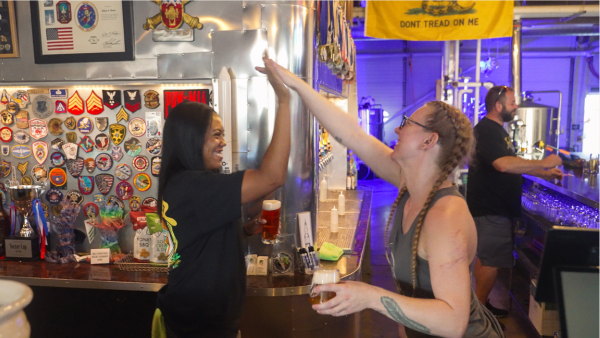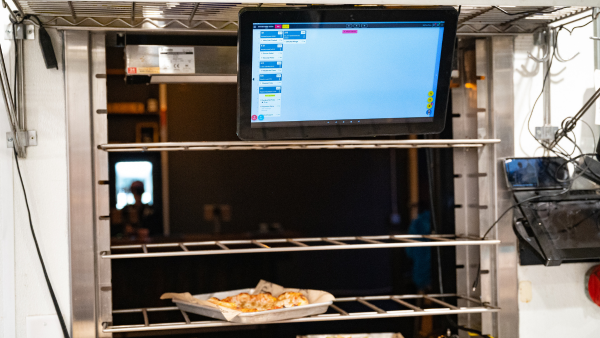If you spend any time in the craft beer world, you’ve felt the impact of Andrew Coplon—founder of Secret Hopper and Craft Beer Professionals, two of the most influential forces pushing breweries to sharpen their taproom experience. In the latest episode of Behind the Tab, Andrew sat down with us to share his journey, the data behind guest engagement, and the small habits that separate thriving taprooms from struggling ones.
In every episode of Behind the Tab, we spotlight the operators, partners, and team members who bring GoTab’s mission to life. This week, we’re excited to feature someone whose journey embodies what it means to be industry adjacent—still deeply connected to hospitality, but channeling that passion into helping operators thrive in new ways. Luke Coan, GoTab’s Regional Director of Growth based in Boulder, Colorado, is the definition of a modern hospitality professional: equal parts culinary craftsman, operational problem-solver, and creative technologist. His path to GoTab is anything but linear—and that’s exactly why it’s so compelling.
The brewery industry has always been rooted in community, connection, and celebration—which makes events one of the most natural (and profitable) extensions of a taproom business. But running an events program that actually scales is a very different challenge. During our recent webinar with Joy Reichenbach from Other Half Brewing and Tripleseat, we dug into exactly how successful multi-location breweries are building, pricing, and operationalizing their events programs and the technology that makes it all possible.
Running a brewery today means more than pouring great beer. The most successful taprooms have evolved into hybrid spaces—community hubs, gathering places, and private-event destinations. Events now represent one of the industry’s strongest revenue streams, but scaling an events program requires more than saying yes to birthday parties and corporate happy hours. It requires structure. It requires operational flow. And it requires technology that doesn’t make your staff’s lives harder.
In high-volume, multi-unit environments like food halls, brewery-anchored marketplaces, and fast-growing pickleball entertainment venues the way guests order, pay, and move throughout the space directly shapes their experience. The challenge is simple to explain but hard to solve: guests want frictionless ordering everywhere in the venue, while operators and vendors need precise revenue allocation, clean reporting, and fair distribution of tips and taxes.
As back-of-house operations become more complex—and guest expectations continue rising—Kitchen Display Systems (KDS) have evolved from “nice-to-have tech” into an essential engine for running smooth, efficient, and guest-friendly hospitality operations. Whether you’re a brewery expanding into food, a taproom juggling off-peak and peak periods, or a multi-station kitchen managing cross-team coordination, a modern KDS helps eliminate friction while unlocking measurable gains across service, throughput, and guest satisfaction.
GoTab, a leading Point-of-Sale (POS) platform, announced the launch of four new integrations to its partner ecosystem. These new POS integrations cater to the varied demands of restaurants, breweries, bars, and eatertainment venues, empowering them with more versatile solutions.
Hospitality commerce platform announces further expansion of integrated partner ecosystem, introducing a range of new solutions designed to enhance operational efficiency and customer experience of hospitality businesses
Leading commerce platform bolsters presence in the growing eatertainment category; Integration with Restaurant365 enables labor optimization and operational excellence

.png)
.png)

.png)


.avif)
.avif)
-p-1080.avif)